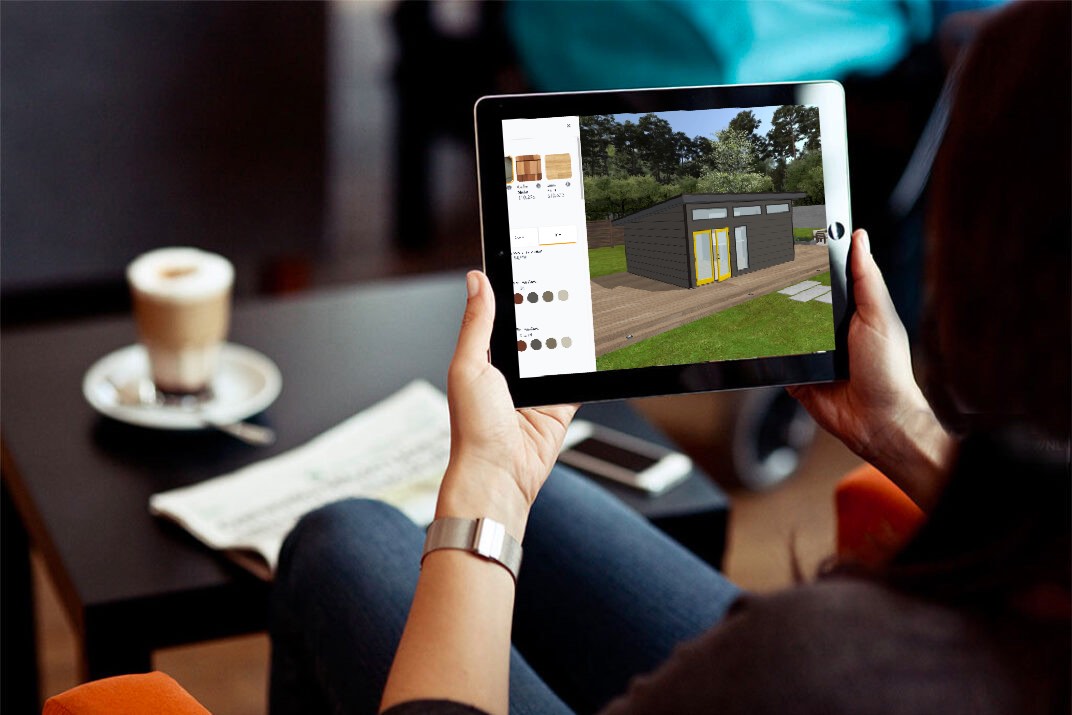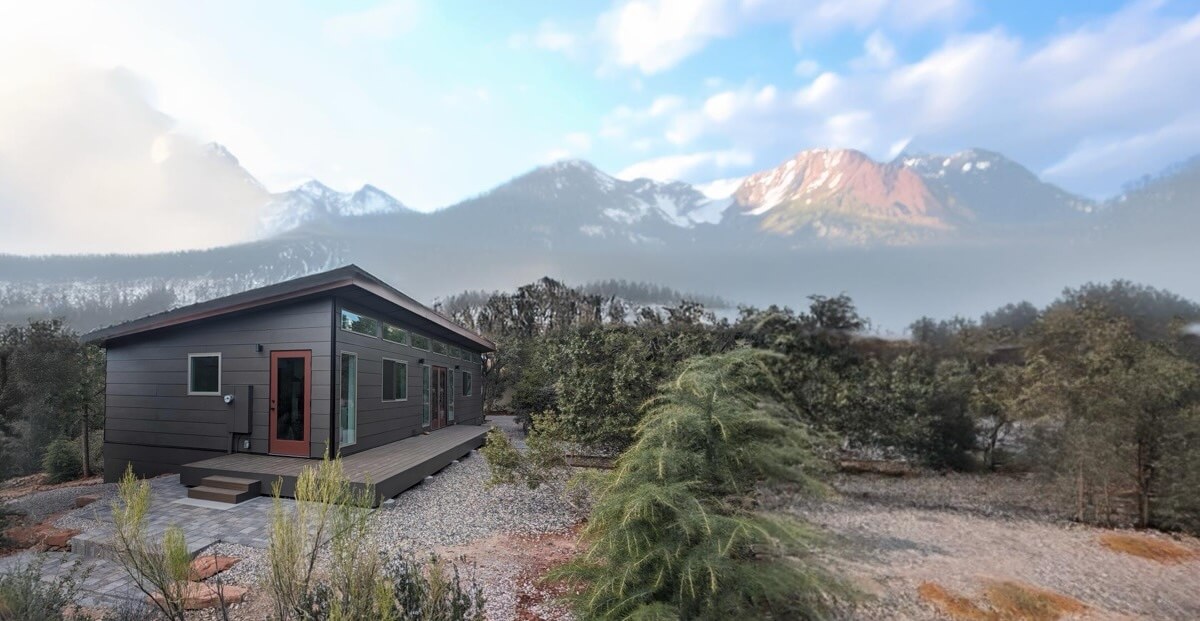STUDIO SHED FEATURED IN HOUZZ ARTICLE “HOW TO ADD A BACKYARD SHED FOR STORAGE OR LIVING”
Most of us can use more space, whether it’s for working, storing or doing hobbies. But adding square footage to an existing home can be time consuming and costly. That’s why many homeowners are turning to backyard sheds.
These freestanding structures often don’t require permits and are quick and easy to set up; their basic construction means a short installation time. Meanwhile, advances in prefabrication methods have spawned numerous businesses that will ship semicustom designs right to your door that can be assembled in half a day. So what would you do with an extra room?
Here’s what you’ll want to know to get started.
Project: Adding a backyard shed.
Why: To get extra space for storage or living.
First Steps
1. Consider size and function. First determine what size space you need and what it will be used for. Do you need just a storage shed for lawn equipment? Will you use it for a gardening and potting? Do you want a home office? A pool house? A greenhouse? A kids’ playroom? A guesthouse? This will help drive the design. For example, you’ll probably want more windows for natural light if it’ll be a home office. If it’ll just be a storage shed, you might not need or want windows.
2. Measure. Brennan Deitsch, the online marketing manager at Backyard Buildings, suggests measuring all the items you plan to store in your shed, then accounting for storage growth over time. “I see people try to go the cheap, small route and come back later saying they wish they had gotten a bigger one because they ran out of space so fast,” he says.
3. Check your local zoning ordinances. Every municipality has different restrictions when it comes to sheds and other accessory buildings. Many codes will dictate the size of your structure and how far it must be from your property line.
“The vast majority of counties across the [United States] allow up to 120 square feet without a permit,” says Jeremy Horgan-Kobleski, the founder of Studio Shed, which manufacturers prefab sheds like the home office seen here. “That’s why our 10-foot by 12-foot unit is the most popular and one of the reasons we’re seeing a surge in the popularity of these structures.”
He says typically these structures must be sited about 3 to 5 feet from the property line. (Even if your city doesn’t require a permit, it will still have general rules about where your structure can be sited on your lot, so always check first.)
4. Locate your plat of survey. If your city does require a permit for the structure you want, you’ll want to locate your plat of survey, which is a map that shows the layout of your lot and its property line. You’ll submit this to your local zoning department to help determine where your structure can be sited.
“You’ll probably have this in your closing documents from when you bought your home, even if you didn’t know it was there,” says Greg Brehm of O’Connor Brehm Design-Build.
If you don’t have a plat, you can hire a surveyor for about $300 to $600, Brehm says.
3 Basic Shed Options
You can purchase off-the-shelf kits from big-box stores like The Home Depot and Lowe’s. You can order prefabricated, semicustom units from online retailers like Studio Shed, whose shed is shown here above. Or you can go the 100 percent custom route and hire an architect to design something that blends seamlessly with your landscape and existing home structure.
Obviously, the pricing structure follows this hierarchy as well, but you typically get what you pay for, so consider all the options.
Off-the-shelf sheds. If you’re looking for a cost-effective way to store some lawn equipment in a place that you rarely see, such as behind a garage or on the side of your house, an off-the-shelf product might be just fine for you.
Prefab sheds. If you’re looking for something that is more versatile and can be used differently over time, such as going from storage to a home office, and that offers semicustomizable options for color and windows, then an online prefab unit is a good bet.
Custom sheds. If you want to integrate your shed with your home and landscape, consider a custom shed designed by an architect.
Cost: You can find basic, off-the-shelf sheds made from plastic and resin at local big-box stores for about $600 for a 7-foot by 7-foot unit or around $1,700 for a 15-foot by 8-foot unit.
Online prefab companies like Studio Shed sell contemporary units made from cement-board siding and corrugated metal that start at $7,000 for an unfinished 8-foot by 10-foot unit. (The company also offers a lifestyle interior package that includes denim insulation, full electrical wiring and fixtures, seamless drywall cladding and various flooring options.) Larger prefab units can cost upward of $20,000.
A custom shed designed by a professional designer will likely start at $50 per square foot but can be as high as $200 per square foot, Conroy says.
How long will installation take? Big-box stores typically have people who can help install their off-the-shelf sheds in half a day.
Online prefabricated units come shipped on a truck and can generally be put together by a crew in half a day or a day. Studio Shed offers digital DIY tools that include a 3D video so you can tackle the project with some friends.
Custom units can take a week to a couple of months to build, depending on the size and complexity.
Except for the off-the-shelf models, you’ll also need to factor in shipping and design time.
To read the original article, visit Houzz.

Make Your Escape
Design Your Studio Shed
One shed does not fit all. Our innovative prefab solution is a flat-packed, panelized kits of parts with hundreds of customizations in the Design Center. There are millions of combinations of sizes, door and window placements, and colors. All thoughtfully designed to work together.








